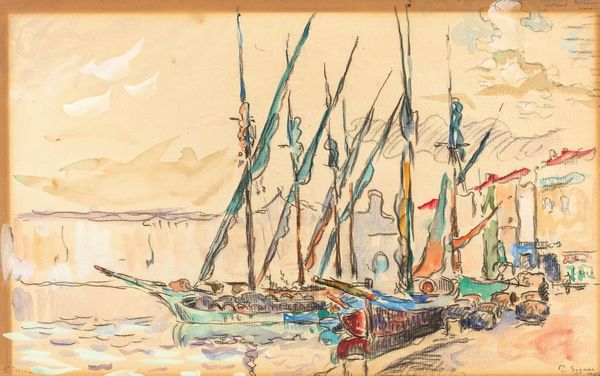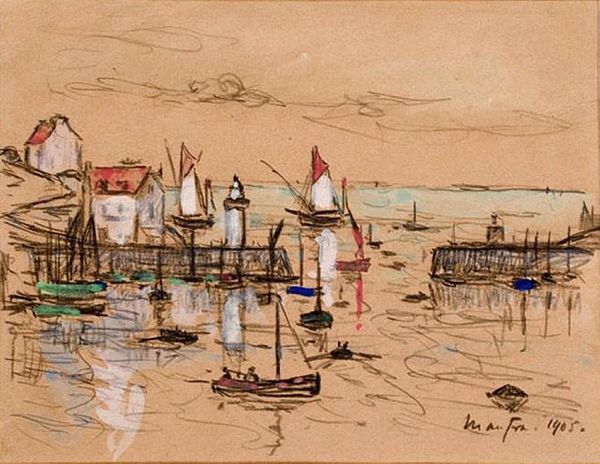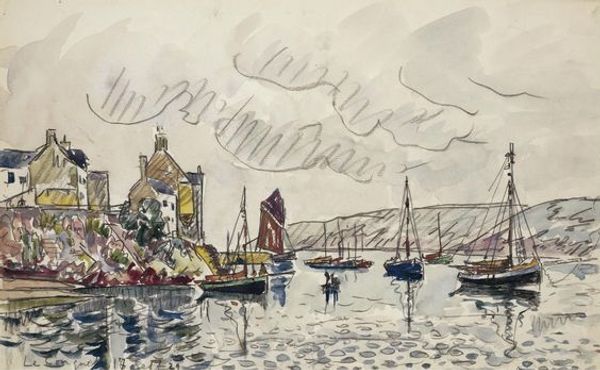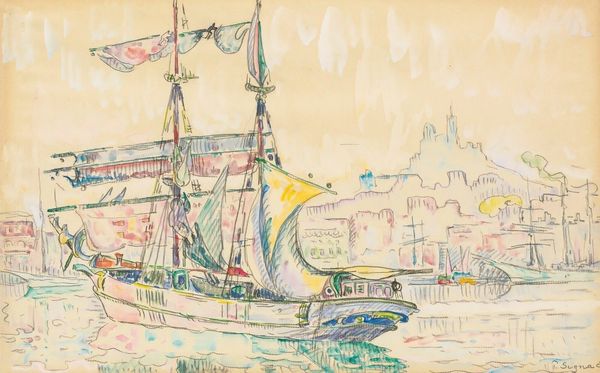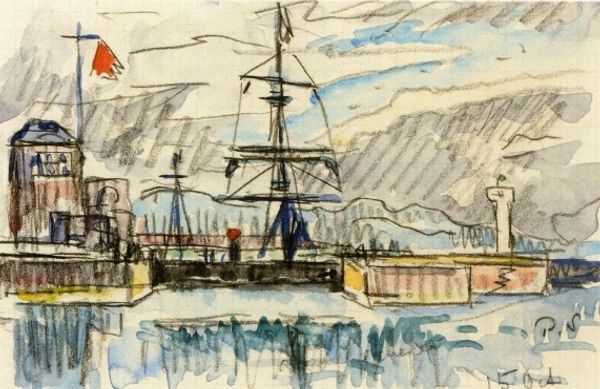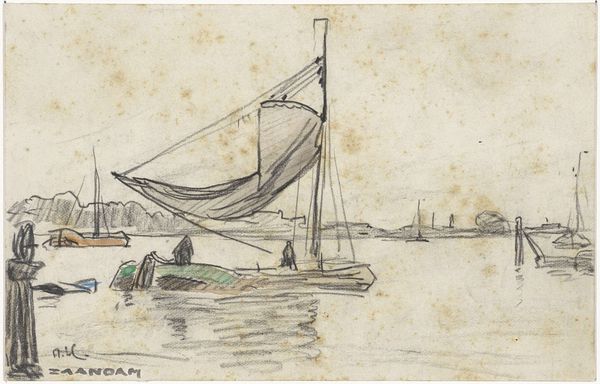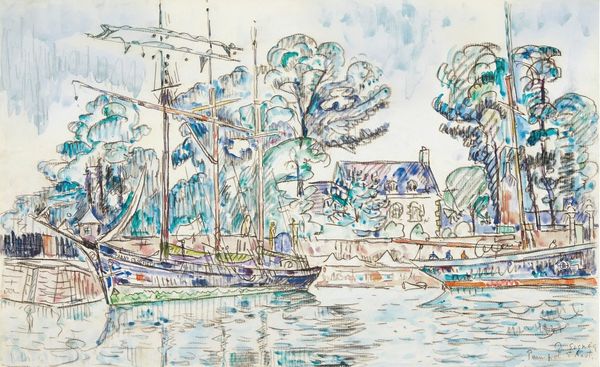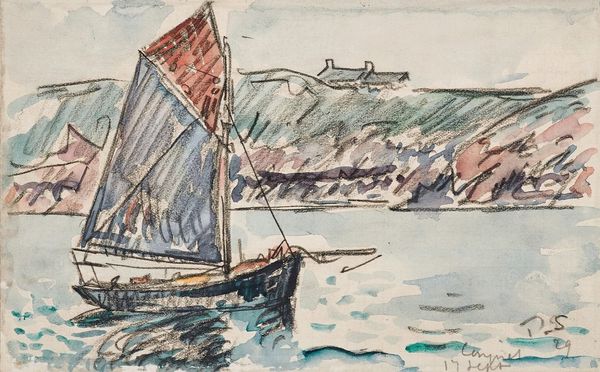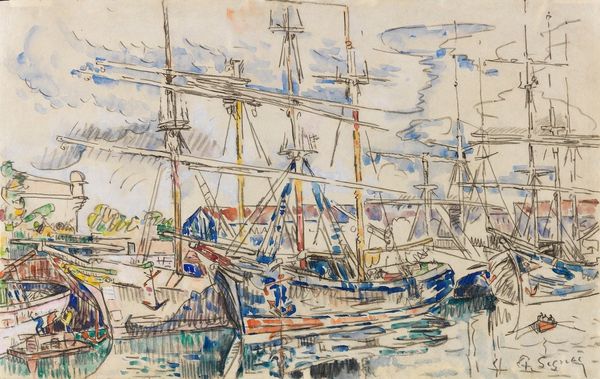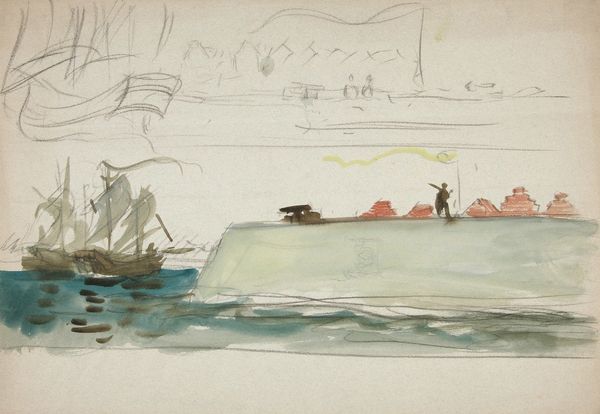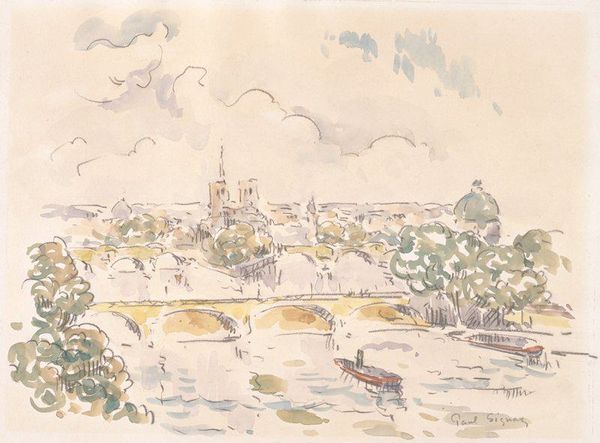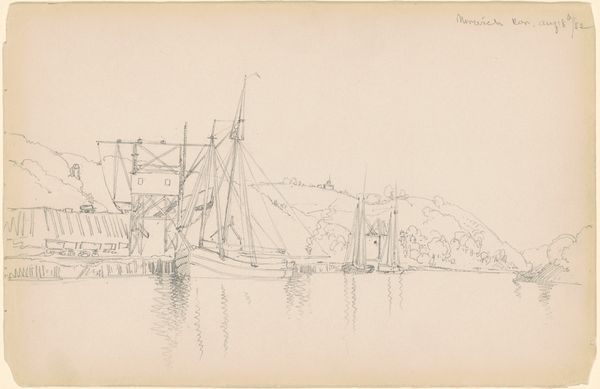
Dimensions: 29.85 x 45.09 cm
Copyright: Public domain
Editor: Paul Signac's watercolor "Antibes," created in 1917, depicts a vibrant harbor scene. The quick, fluid lines give the piece a sense of immediacy. How do you interpret this work within the context of its time? Curator: Considering this work, created during World War I, Signac presents a perspective far removed from the war's devastating realities. Do you see a deliberate choice here to portray leisure and beauty amidst a global conflict? It's almost an escapist view, particularly given Signac's position within Post-Impressionism, a movement already questioning societal norms and the purpose of art. The active brushstrokes create an environment devoid of the stark social commentary found in some contemporary art from that era. What could that signal, do you think? Editor: So, perhaps this is Signac making a political statement, not by showing the horrors of war, but by intentionally creating beauty in defiance of it? Curator: Precisely. By choosing to depict Antibes in this idyllic manner, Signac perhaps invites the viewer to reflect on what is worth preserving, even fighting for, during times of great upheaval. Furthermore, consider that harbor cities like Antibes, while seemingly removed from conflict, were crucial points of connection and sites deeply affected by broader political dynamics. Can we consider it an active choice? Editor: That's a perspective I hadn't considered before. It's fascinating how much historical and social context shapes our understanding of art. Curator: Absolutely. Thinking critically about the era, about Signac's aesthetic choices, and their cultural resonance provides so much context. Editor: It adds layers of meaning I wouldn't have seen otherwise. Thanks for helping me understand that!
Comments
No comments
Be the first to comment and join the conversation on the ultimate creative platform.
